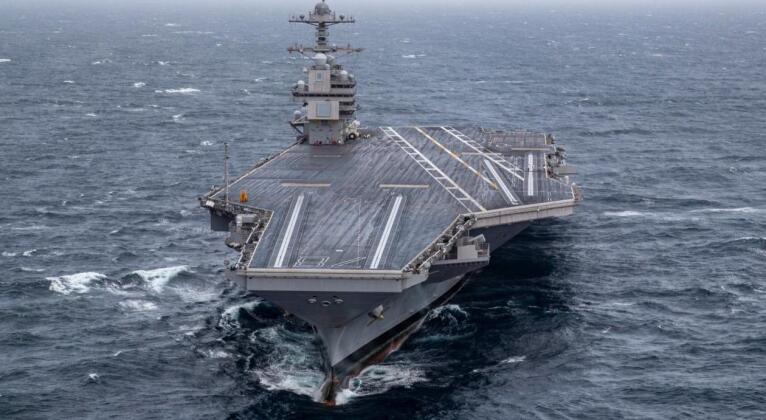News
Nine Years After Launch $17.5 Billion Supercarrier USS Gerald Ford Class Finally Begins Operational Deployments

The first aircraft carrier of the Gerald Ford Class, the USS Gerald Ford, has begun its first ever operational deployment after it left Naval Station Norfolk in Virginia on October 4, two days behind schedule, to join the U.S. Navy Second Fleet for deployments in the northern Atlantic. This marks the first time in over 10 years that a new American supercarrier has made its maiden deployment, with the last carrier of the Nimitz Class the USS George H. W. Bush having been commissioned in 2009 and first deploying two years later. It is also the first maiden deployment of the first of a new supercarrier class in 51 years since the USS Nimitz deployed to the Mediterranean Sea in 1976.
At over $17.5 billion the USS Ford is among the most costly warships ever built, setting the Navy back 2-3 times as much as its predecessor the Nimitz Class. Although both are 100,000 ton ships with similarly sized air wings, the Ford Class introduces a range of new technologies including greater levels of automation allowing for a smaller crew, an entirely new sensor suite, and most notably the use of electromagnetic catapult systems to launch aircraft from its deck. The Gerald Ford Class is one of just two carrier classes laid down with this technology alongside the Chinese People’s Liberation Army Navy’s Type 003 Class ships the first of which launched in June 2022.
Laid down in November 2009 and launched just four years later in October 2013 the USS Ford and has faced very long delays in making it operational due to wide ranging performance issues with its subsystems over the past nine years. Among other areas these have affected its weapons elevators, electromagnetic catapults, human waste management and sensors. The design was so problematic that a Project on Government Oversight report referred to it as an example of “how not to build a ship,” with radars proving so problematic that it was decided an entirely new sensor suite would need to be developed for future ships of the Gerald Ford Class. The Ford’s maiden deployment comes after Rear Admiral James Downey announced in September that the ship had “met her initial operating capability,” indicating that the ship was still not fully operational.
For its first deployment the USS Ford will lead a carrier group including a Ticonderoga Class cruiser and Three Arleigh Burke Class destroyers alongside a range of support ships, and will carry out exercises with allied NATO navies of France, Germany, the Netherlands and Spain as well as future NATO members Finland and Sweden. Head of U.S. 2nd Fleet Vice Admiral Dan Dwyer stated regarding the choice of the Atlantic for deployment: “The Atlantic is an area of strategic interest… Our primary goal is to contribute to a peaceful, stable, and conflict-free Atlantic region through the combined naval power of our Allies and partners. The deployment of USS Gerald R. Ford’s carrier strike group is the natural progression of our renewed commitment to the Atlantic.”
Dwyer elaborated that it would include “sailing with six allied ships, as well as the carrier strike group, U.S. naval support and destroyers, and in those eight distinct phases she will conduct strike group steaming, air defence exercises, maritime domain awareness, long-range maritime strike, distributed maritime operations, anti-submarine warfare exercises, as well as naval integration.” The USS Ford was initially intended to be the first of ten supercarriers of its class, although issues with the ship and questions regarding the feasibility of such costly platforms in the face of increasingly advanced anti ship weapons has led the possibility widely being raised of deep cuts to orders in favour of smaller carriers.












